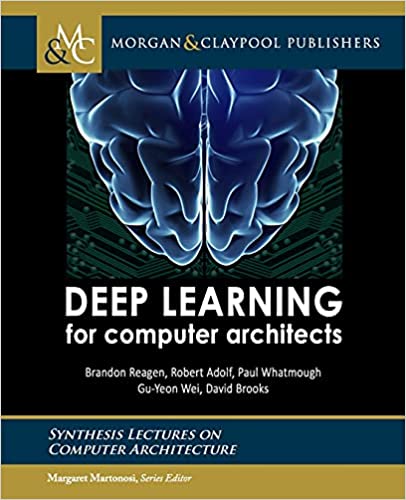

Most ebook files are in PDF format, so you can easily read them using various software such as Foxit Reader or directly on the Google Chrome browser.
Some ebook files are released by publishers in other formats such as .awz, .mobi, .epub, .fb2, etc. You may need to install specific software to read these formats on mobile/PC, such as Calibre.
Please read the tutorial at this link: https://ebookbell.com/faq
We offer FREE conversion to the popular formats you request; however, this may take some time. Therefore, right after payment, please email us, and we will try to provide the service as quickly as possible.
For some exceptional file formats or broken links (if any), please refrain from opening any disputes. Instead, email us first, and we will try to assist within a maximum of 6 hours.
EbookBell Team

4.1
100 reviewsThis is a primer written for computer architects in the new and rapidly evolving field of deep learning. It reviews how machine learning has evolved since its inception in the 1960s and tracks the key developments leading up to the emergence of the powerful deep learning techniques that emerged in the last decade.
Machine learning, and specifically deep learning, has been hugely disruptive in many fields of computer science. The success of deep learning techniques in solving notoriously difficult classification and regression problems has resulted in their rapid adoption in solving real-world problems. The emergence of deep learning is widely attributed to a virtuous cycle whereby fundamental advancements in training deeper models were enabled by the availability of massive datasets and high-performance computer hardware.
It also reviews representative workloads, including the most commonly used datasets and seminal networks across a variety of domains. In addition to discussing the workloads themselves, it also details the most popular deep learning tools and show how aspiring practitioners can use the tools with the workloads to characterize and optimize DNNs.
The remainder of the book is dedicated to the design and optimization of hardware and architectures for machine learning. As high-performance hardware was so instrumental in the success of machine learning becoming a practical solution, this chapter recounts a variety of optimizations proposed recently to further improve future designs. Finally, it presents a review of recent research published in the area as well as a taxonomy to help readers understand how various contributions fall in context.
Review: The book is mainly for hardware architects who are interested in exploiting properties of neural networks to optimize performance, power and area for an inference accelerator. This book assumes the readers have certain level of background in deep neural networks.